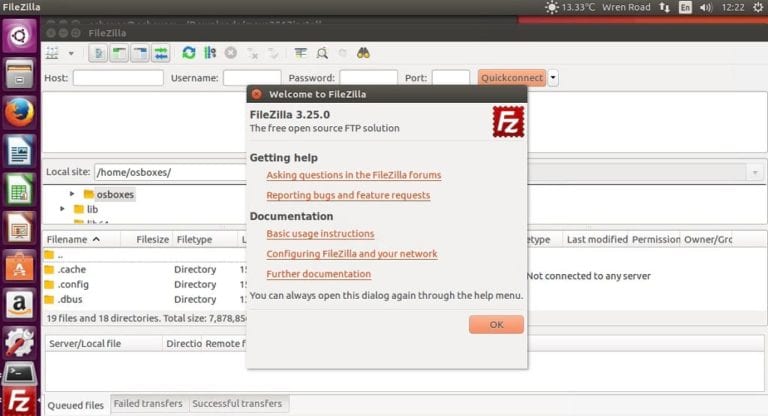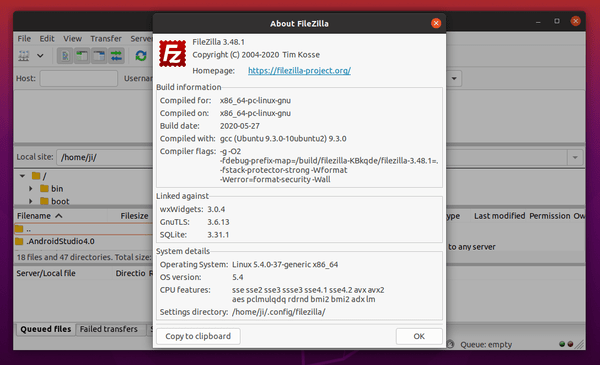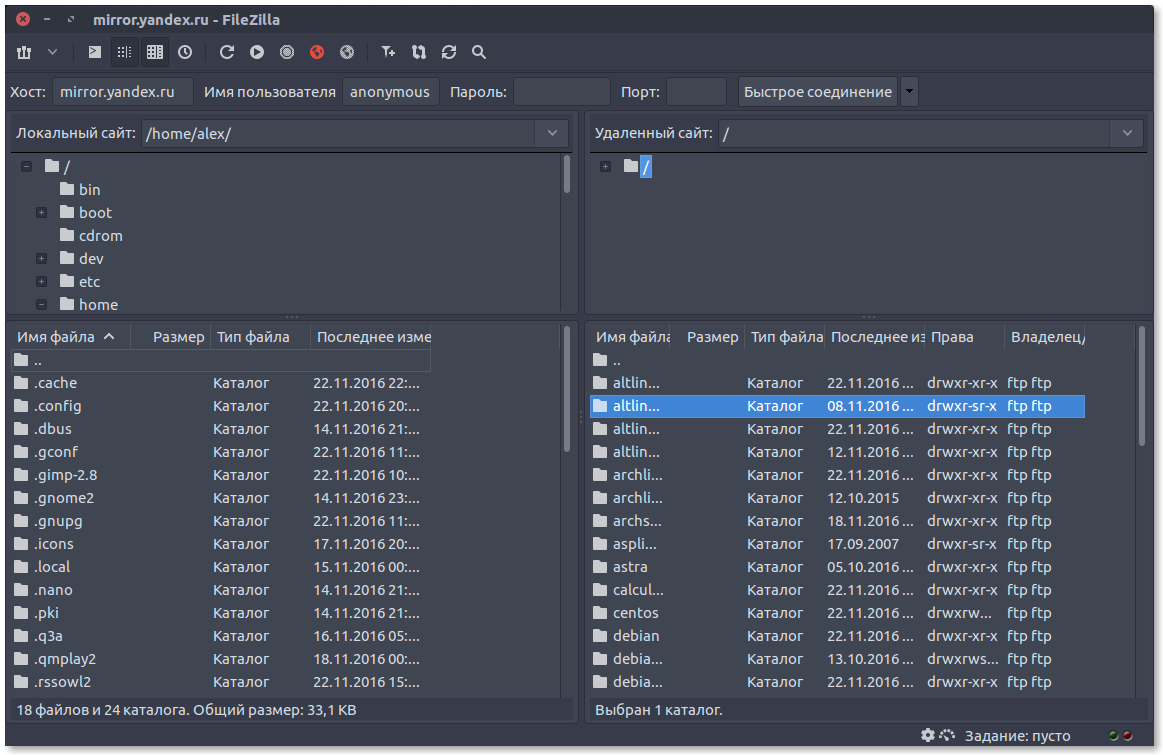

- Mojave brew install filezilla update#
- Mojave brew install filezilla software#
- Mojave brew install filezilla free#
You won’t need Xcode to use Homebrew, but some of the software and components you’ll want to install will rely on Xcode’s Command Line Tools package.Įxecute the following command in the Terminal to download and install these components: Xcode is an integrated development environment (IDE) that is comprised of software development tools for macOS. Step 2 - Installing Xcode’s Command Line Tools Now that you have the Terminal running, let’s install some additional tools that Homebrew needs. The command line interface on macOS is very similar, and the concepts in that tutorial are directly applicable. To get more comfortable using the command line, take a look at ( ). Alternatively, you can use Spotlight by holding down the COMMAND key and pressing SPACE to find Terminal by typing it out in the box that appears. From here, double-click the Terminal application to open it up. Like any other application, you can find it by going into Finder, navigating to the Applications folder, and then into the Utilities folder. To access the command line interface on your Mac, you’ll use the Terminal application provided by macOS. While older versions of macOS may work, they are not officially supported. You will need a macOS computer running Catalina or higher with administrative access and an internet connection. You’ll install system tools and desktop applications from the command line interface. In this tutorial you’ll install and use Homebrew on your Mac. You’ll use Homebrew to install developer tools like Python, Ruby, Node.js, and more.
Mojave brew install filezilla free#
Homebrew is a package manager for macOS which lets you install free and open-source software using your terminal. Package managers keep the software they install in a central location and can maintain all software packages on the system in formats that are commonly used. A package manager is a collection of software tools that work to automate software installations, configurations, and upgrades. While the command line interface on macOS has a lot of the functionality you’d find in Linux and other Unix systems, it does not ship with a package manager. The command line, also known as a shell, lets you automate many tasks you do on your computer daily, and is an essential tool for software developers. Instead of clicking buttons with your mouse, you’ll type commands as text and receive text-based feedback.
Mojave brew install filezilla update#
If you received an error that said Access denied for user (using password: NO) then you need to update your config/database.yml file to match the database username and password.The command line interface is a non-graphical way to interact with your computer. Now that you've got your machine setup, it's time to start building some Rails applications. You can now visit to view your new website! # config/database.yml file to contain the username/password that you specified # If you setup MySQL or Postgres with a username/password, modify the # Note you will need to change config/database.yml's username to be Let's create your first Rails application: rails new myapp You might need to run the following command to install pg, nokogiri, or other gems that require C extensions: sudo installer -pkg /Library/Developer/CommandLineTools/Packages/macOS_SDK_headers_for_macOS_10.14.pkg -target /Īnd now for the moment of truth. Mojave changed the location of header files necessary for compiling C extensions. For example, my OS X user is named chris so I can login to postgresql with that username.

Follow the instructions and run them: # To have launchd start postgresql at login:īy default the postgresql user is your current OS X username with no password. Once this command is finished, it gives you a couple commands to run. You can install PostgreSQL server and client from Homebrew: brew install postgresql When you're finished, you can skip to the Final Steps. Follow the instructions and run them: # To have launchd start mysql at login:īy default the mysql user is root with no password. You can install MySQL server and client from Homebrew: brew install mysql

If you're coming from PHP, you may already be familiar with MySQL. If you're new to Ruby on Rails or databases in general, I strongly recommend setting up PostgreSQL. There is a lot of documentation on both, so you can just pick one that seems like you'll be more comfortable with. You'll probably want something more robust like MySQL or PostgreSQL. Chances are you won't want to use it because it's stored as a simple file on disk.

Rails ships with sqlite3 as the default database. We're going to install sqlite3 from homebrew because we can't use the built-in version with macOS Sierra without running into some troubles.


 0 kommentar(er)
0 kommentar(er)
